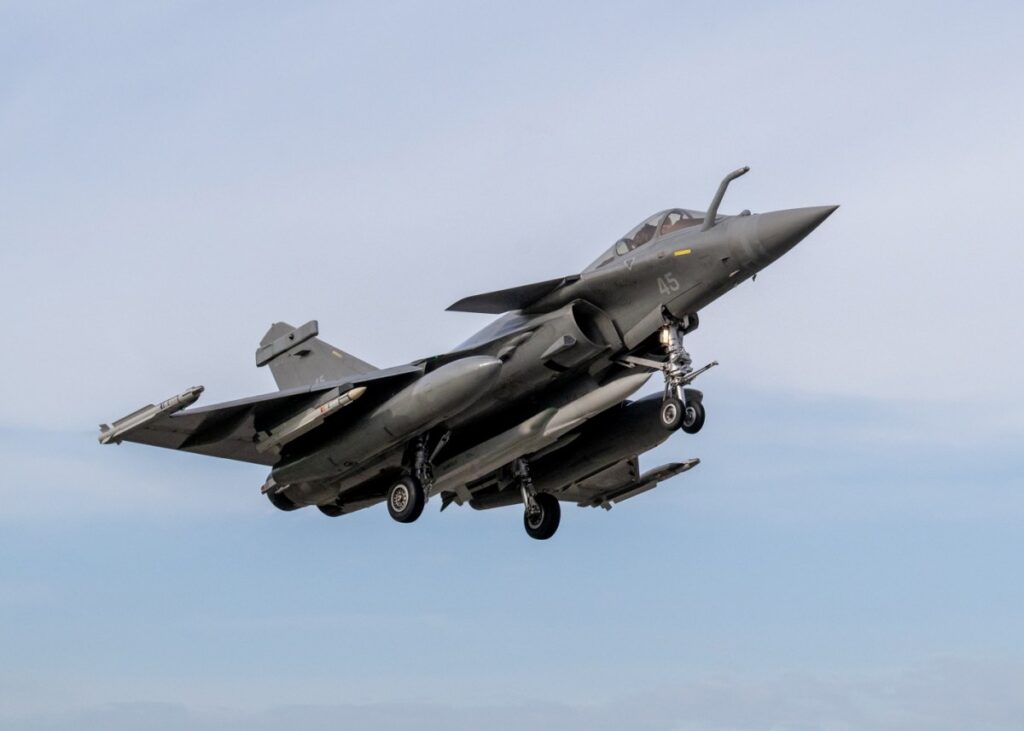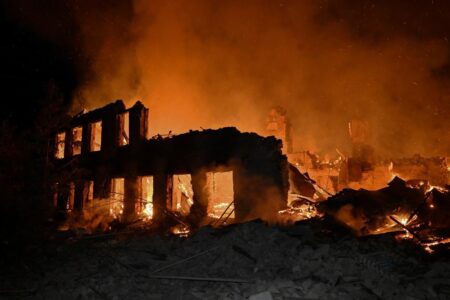Nuclear-armed states continue to modernize their arsenals, with France—a major U.S. military ally in NATO—recently test-firing an upgraded but unarmed nuclear missile.
The medium-range, air-to-surface missile, known as the ASMPA-R, will be equipped on Rafale fighter jets deployed on the aircraft carrier FS Charles de Gaulle, serving as the airborne component of the country’s nuclear deterrent, the French navy said on Thursday.
Why It Matters
France is one of nine countries—and one of three NATO member states, alongside the U.S. and the U.K.—armed with nuclear weapons, possessing approximately 290 warheads ready for delivery by ballistic missile submarines and fighter aircraft.
Earlier this year, French President Emmanuel Macron raised the prospect of extending France’s nuclear umbrella—a security guarantee to non-nuclear-armed states—to other European nations amid Russia’s threat and a possible U.S. retreat from the continent.
The French missile test launch comes after similar activities by the U.S. and Russia. A new American nuclear cruise missile appears to have been unveiled, while Russia tested a nuclear-powered cruise missile thought to be capable of carrying a nuclear warhead.
What To Know
Catherine Vautrin, France’s defense minister, said an “evaluation firing” of the ASMPA-R was conducted on Thursday by a Rafale Marine—a variant of the fighter jet designed to operate from aircraft carriers—without a nuclear warhead.
The French Defense Ministry said the missile was commissioned with the French Naval Nuclear Air Force (FANU) of the French navy on Monday before the test, completing the modernization of the airborne component of France’s nuclear deterrent.
The test, described by the ministry as “a flight simulating a nuclear strike,” validated the weapon system’s entire deployment chain—from attachment under the aircraft to launch—confirming its technical and operational capabilities, the French navy said.
The missile has also been in service with the French Strategic Air Forces (FAS) under the French air force since 2023. However, images of the test in May last year—carried out by FAS Rafale aircraft—had blurred the missile to hide its details.
Photos released this week by the French navy and shared on its Facebook page provided a clear view of the ASMPA-R, which was mounted at the centerline under the Rafale Marine as it departed Landivisiau Naval Air Base in northwestern France.
According to the military aviation website The Aviationist, the ASMPA-R, the second upgraded variant of the original ASMP, conducted its first test launch in December 2020. It carries a 300-kiloton thermonuclear warhead and has a range of 372 miles.
The energy released by the U.S. atomic bombs dropped on Hiroshima and Nagasaki in Japan in 1945 was equivalent to 16 kilotons and 21 kilotons of TNT, respectively.
While the Charles de Gaulle is the only NATO surface ship equipped to carry nuclear weapons, it does not deploy with the FANU and nuclear missiles on routine missions, according to the Nuclear Information Project at the Federation of American Scientists, a Washington think tank.
In addition to nuclear-capable fighter jets, France operates four nuclear-armed ballistic missile submarines, which recently received a boost in firepower thanks to the introduction of the newest variant of the M51 nuclear submarine-launched ballistic missile, the M51.3.
What People Are Saying
Catherine Vautrin, France’s defense minister, said on Thursday: “Long planned, this successful operation fulfills the ambition set by the President of the Republic and completes the maneuver to renew the capabilities of the airborne nuclear component planned by the [Military Programming Law] (2024-2030).”
The French navy said on Thursday: “The FANU, a key pillar of the airborne component of deterrence, benefits from the versatility, operational flexibility, and projection capabilities of the aircraft carrier and its carrier strike group. This firing confirms its technical and operational capabilities.”
What Happens Next
France is developing a fourth-generation air-launched nuclear missile with enhanced stealth and maneuverability to replace the ASMPA-R. It is expected to be operational by 2035 and remain in service beyond the 2050s, the Nuclear Information Project said.
Read the full article here














